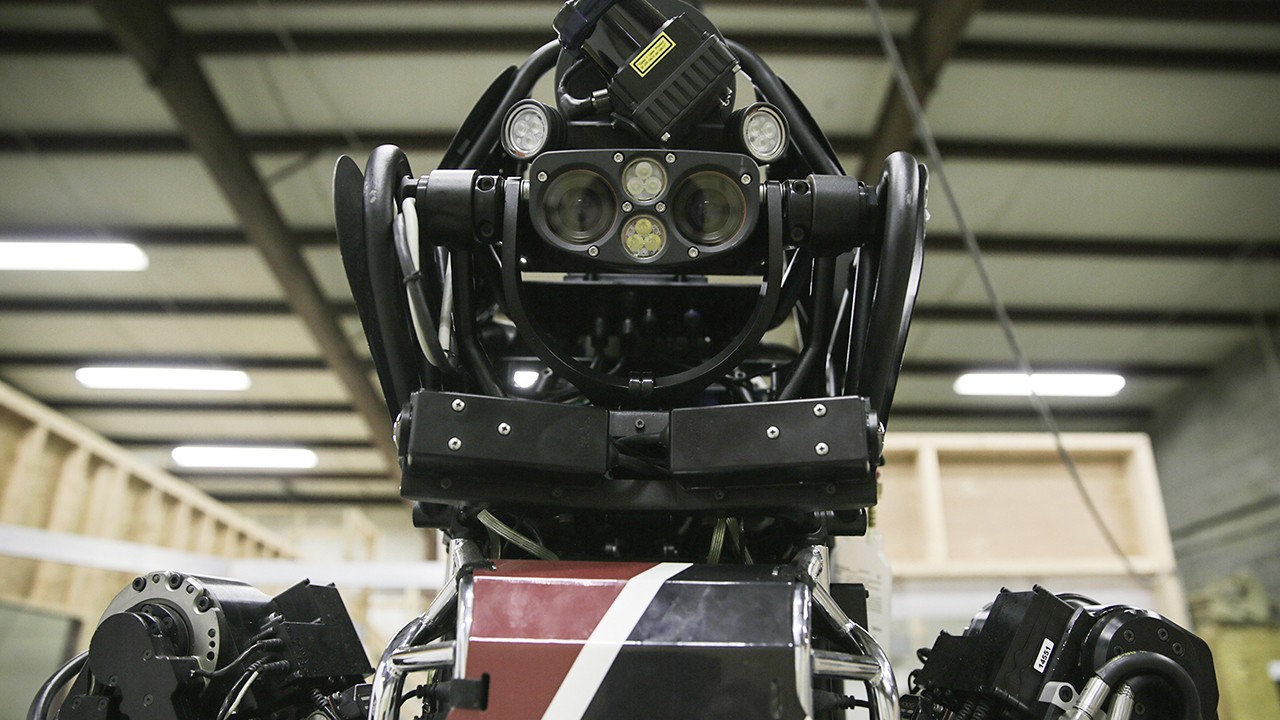The MAARS, seen here in an August 2008 Army demonstration, was a robotic, unmanned vehicle equipped with non-lethal and lethal armament. Image: US Army
Following a high-profile screw-up in Iraq a decade ago, the US Army has been reluctant to deploy armed ground robots. But rival armies—Russia's, in particular—have no such hang-ups, and are quickly developing lethal ground bots that could render today's armored vehicles obsolete.That's the conclusion of a new study from Robert Bunker, a professor at the Army War College in Pennsylvania. "While the United States has the technical lead in developing teleoperated ground systems, it has stumbled in their actual fielding in combat," Bunker writes.The Army possesses arguably the world's best tank—the M-1A2, a heavily upgraded version of a fighting vehicle that first entered service in the early 1980s and carries a crew of four.But the M-1 is beginning to lose relevance, Bunker argues. "Corporate and Congressional district interests" are the only reasons the Army still builds new M-1s, he claims.
Armed ground robots will begin replacing tanks "at some point in the future," Bunker predicts. Sensing the change, in mid-November the United Nations held a hearing on the dangers armed robots pose to human civilization.The Russian military for one is embracing automatons. "Emerging Russian systems include a humanoid military robot, aerial drones, tank drones and assorted robotic military vehicles," Bunker writes. In October, the Kremlin announced it would acquire the Nerekhta, a tracked robot armed with remotely-operated weapons including machine guns and rocket launchers.Nerekhta exceeds the capabilities of manned vehicles “in a number of parameters,” according to Col. Oleg Pomazuev, a Russian military researcher. The US Army, by contrast, let an early robotic advantage slip away. In a March report, the ground-combat branch warned it must pursue robotic and autonomous systems, or RAS, "with urgency because adversaries are developing and employing a broad range of advanced RAS technologies."Between 2004 and 2008, soldiers in Iraq experimented with small reconnaissance robots, laying the foundation for a sophisticated robotic force. Troops strapped explosive mines to toylike, remote-controlled trucks and drove them into insurgent strongholds. In 2007 a small Pentagon program produced a tracked robot armed with a machine gun.That Special Weapons Observation Remote Direct-Action System, or SWORDS, could have been America's first purpose-made, armed ground drone, and the precursor to future robotic tanks. In parallel, the Army was developing an array of new vehicles—some of them semi-autonomous—as part of the $100 billion Future Combat Systems.But it wasn't to be. SWORDS "suffered mechanical aiming glitches," Bunker recalls. In other words, it pointed its gun at the wrong targets. Spooked, the Army yanked the bot from Iraq after just a few months. And a couple years later in 2009, the Pentagon cancelled Future Combat Systems on cost grounds.Near-term prospects for a robot tank slipped away. Today the US Army is spending most of its money on slightly better versions of the M-1 and other manned vehicles it's been using since the 1980s or even earlier. "The American way of war has remained far more 20th-century human-control focused," Bunker concludes.Meanwhile, he adds, "opposing armed forces … promote 21st-century semi-autonomous and autonomous control systems."It "won't be easy" for the US Army to change its approach to robotics, Gen. Daniel Allyn, the Army's vice chief of staff, wrote in the March report. "Execution will require Army leaders to be open to new ideas."Get six of our favorite Motherboard stories every day by signing up for our newsletter.
The US Army, by contrast, let an early robotic advantage slip away. In a March report, the ground-combat branch warned it must pursue robotic and autonomous systems, or RAS, "with urgency because adversaries are developing and employing a broad range of advanced RAS technologies."Between 2004 and 2008, soldiers in Iraq experimented with small reconnaissance robots, laying the foundation for a sophisticated robotic force. Troops strapped explosive mines to toylike, remote-controlled trucks and drove them into insurgent strongholds. In 2007 a small Pentagon program produced a tracked robot armed with a machine gun.That Special Weapons Observation Remote Direct-Action System, or SWORDS, could have been America's first purpose-made, armed ground drone, and the precursor to future robotic tanks. In parallel, the Army was developing an array of new vehicles—some of them semi-autonomous—as part of the $100 billion Future Combat Systems.But it wasn't to be. SWORDS "suffered mechanical aiming glitches," Bunker recalls. In other words, it pointed its gun at the wrong targets. Spooked, the Army yanked the bot from Iraq after just a few months. And a couple years later in 2009, the Pentagon cancelled Future Combat Systems on cost grounds.Near-term prospects for a robot tank slipped away. Today the US Army is spending most of its money on slightly better versions of the M-1 and other manned vehicles it's been using since the 1980s or even earlier. "The American way of war has remained far more 20th-century human-control focused," Bunker concludes.Meanwhile, he adds, "opposing armed forces … promote 21st-century semi-autonomous and autonomous control systems."It "won't be easy" for the US Army to change its approach to robotics, Gen. Daniel Allyn, the Army's vice chief of staff, wrote in the March report. "Execution will require Army leaders to be open to new ideas."Get six of our favorite Motherboard stories every day by signing up for our newsletter.
Advertisement
Armed ground robots will begin replacing tanks "at some point in the future," Bunker predicts. Sensing the change, in mid-November the United Nations held a hearing on the dangers armed robots pose to human civilization.The Russian military for one is embracing automatons. "Emerging Russian systems include a humanoid military robot, aerial drones, tank drones and assorted robotic military vehicles," Bunker writes. In October, the Kremlin announced it would acquire the Nerekhta, a tracked robot armed with remotely-operated weapons including machine guns and rocket launchers.Nerekhta exceeds the capabilities of manned vehicles “in a number of parameters,” according to Col. Oleg Pomazuev, a Russian military researcher.

Advertisement